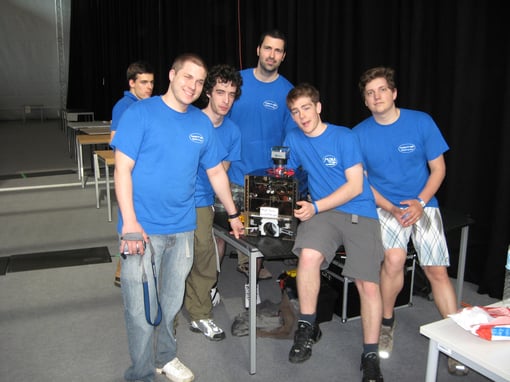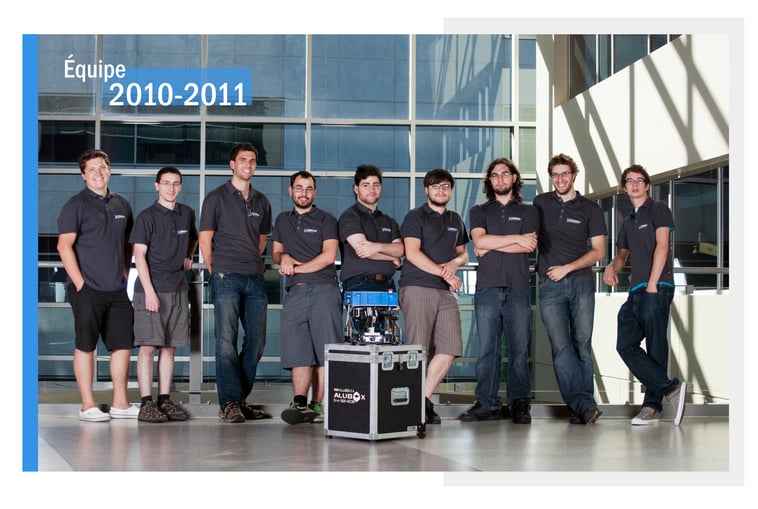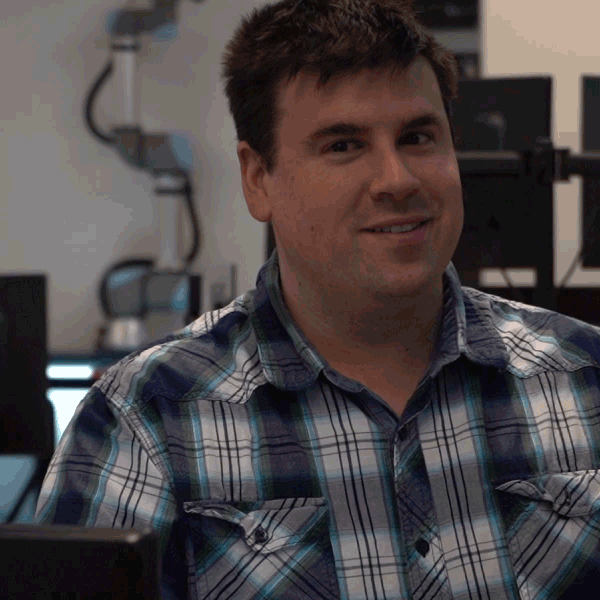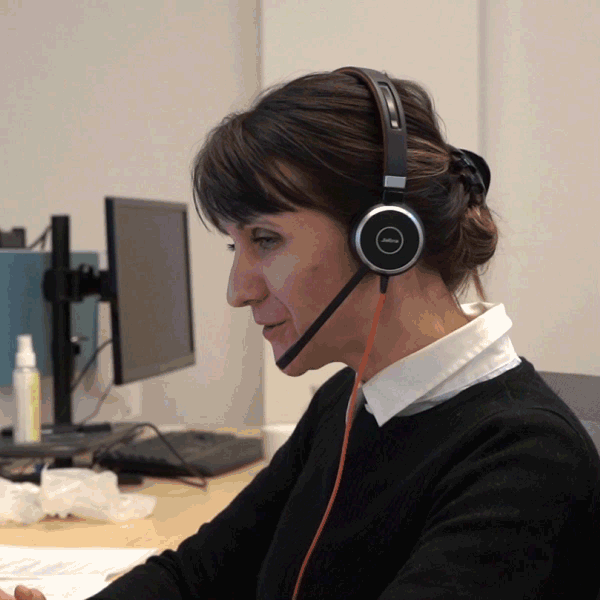“When You Work in a Small Company You Need to be Good.” Introducing Sébastien Bélanger

Posted on Jan 11, 2017 7:00 AM. 7 min read time
Electronics Designer Sébastien Bélanger’s under-the-hood work at Robotiq ensures that customers never know all the equations and signals that go into making a robotic Gripper. A techie from a young age and that guy who used to spend all his time in the robotics club, Sébastien’s ability to tinker helps this company chase away pesky electronic bugs.
Robotiq was founded after lab-mates Samuel Bouchard, Vincent Duchaîne and Jean-Philippe Jobin decided to commercialize some of the mechatronic work they and their professor Clément Gosselin had created at Laval University in Quebec City. That was in 2008.
Today, Robotiq counts more than 30 full-time staff, and our Grippers and sensors operate in 40 different countries. We felt it was time to start telling the stories of our team members.
It’s telling that Sébastien Bélanger’s favorite part of cooking is the sharpening of knives and the cutting of vegetables. Whether it’s making a meal or making a robotic Gripper function efficiently, the electrical engineer puts a lot of stock in an endeavor’s technical details. Just as a tomato’s insides can spurt out due to a dull blade, automation can turn messy without the right prep. Sébastien knows that the wrong amount of voltage applied to a motor turning at 300 RPMs, for example, will result in an overheated Gripper and an unhappy user.
Working in tandem with fellow engineer Yan Drolet-Mihelic, Sébastien takes on the electronic challenges of the Robotiq product line. The two also work within the R&D Department, all letting each other know if a kink has been worked out, a more efficient pathway has been found or that little detail that everyone on the technical team should know about has been discovered.
Electronics represents one side of an important troika of the modern robot that include computer and mechanical technologies. While the software is seen as controlling the robot’s brain and the mechanics its body, Sébastien sees electronics as providing signals and equations that get the body to do what the brain requires of it. In other words, he helps connect brain and body.
Loving all things logical and fascinated with technology since he was small, Sébastien’s years of testing, tinkering, designing and building have naturally led to the work he does at Robotiq, where all that technical preparation translates into helping the company produce a trustworthy product.
Introducing Robotiq’s Sébastien Bélanger: Electronics Designer

Sébastien likes to tell the story of how, as a four year-old, his father found him one day logged onto the family’s computer, despite it being password protected. When his surprised parents asked him how he figured that out, little Sébastien told them he had seen his father type the letters and simply copied those same keystrokes.
Sébastien loved technology from a young age. That tendency to look at how things function was helped by having a father who worked for many years at Bombardier as an electromechanical technician, testing subway trains. Father and son may have shared similar propensities for technology but Bélanger senior preferred to stand on the stable ground provided by a large and successful employer. This was particularly important to him in La Pocatière, in the Lower St. Lawrence, an hour and a half up river from Quebec City, where the family lived and where there were a limited number of prospects for technicians. When an older Sébastien was looking at his career options, his father tried to convince him to aim for Hydro Québec. “He would say you can have a job for the next 25 to 30 years, with a pension and benefits.”
But Sébastien says engineers at big companies feel a pressure to specialize and, in turn, become invisible. He prefers a small company where his skills are tested and his efforts make a difference. “When you work in a small company you need to be good. If you’re not good, people will find out very quickly,” he says adding that employees of lesser talent can easily hide inside a big company.
 His mother, who ran a home daycare, was more the adventurer. Stuck inside the house all week and with her husband often away in different cities in North America, she was always eager to take her two children out on the weekends. She would bring her son and daughter to the local ski hill and encourage Sébastien to take up sports at school. His mother’s seize-the-day approach to life helped shake him out of his shyness.
His mother, who ran a home daycare, was more the adventurer. Stuck inside the house all week and with her husband often away in different cities in North America, she was always eager to take her two children out on the weekends. She would bring her son and daughter to the local ski hill and encourage Sébastien to take up sports at school. His mother’s seize-the-day approach to life helped shake him out of his shyness.
In high school, Sébastien got good marks without applying himself very much. “I’m the kind of guy who frustrated his friends because I never had to study a lot.” He loved math and science courses and particularly disliked French and English, for such things as exceptions to grammar rules and their seemingly arbitrary spelling. He much preferred the clear causality of biology and physics. He loved seeing results in front of him and was inspired by a teacher who brought in a bicycle wheel to show the effects of angular momentum. “It puts meaning behind what you’re learning. And it motivates you to learn.”
 With a love for the logical and a preference for the practical, Sébastien enrolled in a technology program in Cegep (Quebec’s junior college system), which offered a wide range of courses, from measuring acoustics to creating machine-made products. He was happy to have the opportunity to work with “lots of toys,” and venture into a clean room, sound chamber and other intriguing facilities.
With a love for the logical and a preference for the practical, Sébastien enrolled in a technology program in Cegep (Quebec’s junior college system), which offered a wide range of courses, from measuring acoustics to creating machine-made products. He was happy to have the opportunity to work with “lots of toys,” and venture into a clean room, sound chamber and other intriguing facilities.
His first brush with robots came by way of a request from a friend, Jean-François Duval, who had entered Eurobot, an international amateur robotics contest. Jean-François asked him if he would be interested in building the mechanical part of his project. The two would go on to work for many hours on the machine that would eventually be entered in a 90-second contest, where robots would be tasked with building towers.
He went on to attend Montreal’s École de technologie supérieure (ETS), where he studied for his Bachelor’s of Engineering. But Sébastien found the university lectures dull compared to the exciting things happening at ETS’s robotics club. There, he worked in teams, made prototypes, and dealt with budgets and sponsors. He got to work with people who had years of experience designing robots. Most of his colleagues also felt the same about classes and a number of them would take a break from building robots to collectively cram for a test or hand in a compulsory assignment. With the paper written or the test completed, they would all go back to their work at the club.
 The club became his de facto school of robotics. “There, I learned 80 percent of what I know today.”
The club became his de facto school of robotics. “There, I learned 80 percent of what I know today.”
Meanwhile, Jean-François, his robotic partner in Cegep, was working at a robotics company in California. There, Jean-François met Vincent Duchaine, one of the founders of Robotiq and thought Sébastien should know about him. Vincent did a post-doc at Stanford and, by then, was running a robotics lab back in Montreal, at ETS, the engineering school where Sébastien was finishing his studies.
At the time, he and his girlfriend were looking to move back closer to their respective families in La Pocatière. Recognizing the Quebec City connection to Robotiq and with the hopes of a potential move closer to home, he interned at Vincent’s lab in Montreal in the fall of 2012. In early 2013, his wish came true and he landed a job at Robotiq.
One problem with the new job: he still had university courses to finish. That meant taking regular trips, from January until May back to Montreal, where he no longer had an apartment. “I worked for two days a week on Monday and Tuesday; then I’d go to Montreal and sleep on my friend’s couch, going to the lectures in order to finish my three courses,” he recalls. Once Sébastien graduated in May, he could give up the couch. He was given a full-time position at Robotiq.
In his two-person electronics department, he and Yan, who had been hired three months earlier, try to foresee any problems in Robotiq’s products. He says they take care of “all the things you don’t expect to happen to the gripper.” They keep their eyes on the speed and force of the robotic Gripper, working with the microprocessor they call the “mini brain.” It takes instructions from the computer and applies it to all the physical actions of the device.
His work involves being highly cognizant of all that can go wrong, such as making sure the robotic Gripper’s motor doesn’t overheat. For something like that, Sébastien or Yan place a temperature probe in the motor, its electronic signals sending messages to the robot’s controls that the motor will need to shut off if it goes over a certain temperature.
Sébastien makes the work he does invisible to the client. “From a customer perspective, you just want to be able to grab something. You don’t want to have to bother with the speed of the motor or wonder if the motor has enough current,” he says, adding that his job involves taking care of many details, now, so problems will not come up later.
 The intuitive way he works with Yan (“We’re like this old couple,” he jokes.), the way information is freely exchanged within R&D and the desk-side meetings he has with colleagues are very different from the company life his father dreamed of for him. But this is what he prefers. “I love the startup life because of all the challenges and all the connections with people. When you’re 200 or 400 it’s more about politics and departments and stuff like that. When you’re in a small company, you see that the work you are doing is having a direct effect on the project, and the public is using something that comes from what you are doing. I find this really motivating.”
The intuitive way he works with Yan (“We’re like this old couple,” he jokes.), the way information is freely exchanged within R&D and the desk-side meetings he has with colleagues are very different from the company life his father dreamed of for him. But this is what he prefers. “I love the startup life because of all the challenges and all the connections with people. When you’re 200 or 400 it’s more about politics and departments and stuff like that. When you’re in a small company, you see that the work you are doing is having a direct effect on the project, and the public is using something that comes from what you are doing. I find this really motivating.”






Leave a comment